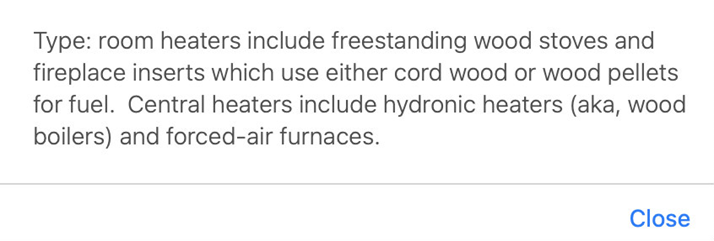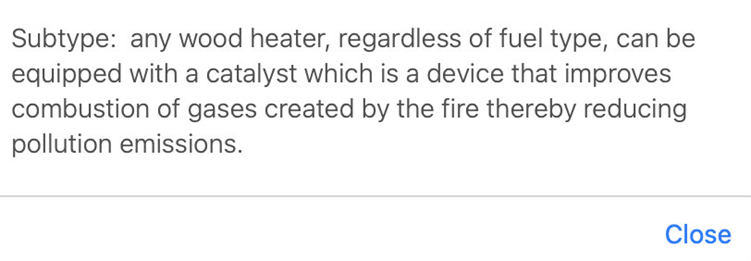With little warning or stakeholder engagement, the Maryland Energy Administration (MEA) said it planned to sunset a stove rebate program that was established more than 10 years ago to help rural, low- and middle-income households who had the highest heat burden.
A coalition of Maryland stakeholders wrote to MEA urging the agency to consider the impact on low and middle income households and to extend the program.
Maryland residents can still purchase eligible stoves through Jan. 4, 2024 and submit rebate applications up to March 31, 2023. The program has been effective over the years and 80% of residents chose the higher rebate level to purchase a pellet stove. The rebate levels are $700 for a pellet stove, $500 for a wood stove, $1,000 for solar panels or shingles and $3,000 for geothermal systems.
A 2020 analysis of data from MEA showed that solar rebates primarily flowed to rich, more urban zip codes, and least likely to go to less affluent, rural zip codes, where wood and pellet heating are popular.
“Its outrageous for millions of rebates to flow to wealthier homes for solar panels and geothermal systems while closing the only rebate program designed for rural low- and middle-income households,” said John Ackerly, President of AGH. “During this climate crisis, we need to support renewable energy technologies that fit the budgets and preferences of everyone, not just well-to-do families.”
 |
| In Maryland, an average home needs about 2 tons of pellets as a primary or sole source of heat, which costs about $550. |
Low and middle income (LMI) families are often marginalized, overlooked and left behind in energy transitions and “the potential closure of this program is a classic case study of this.” Ackerly said.
The Alliance for Green Heat is working with stakeholders to find out more about how the stove rebate program was assessed, why stakeholders were not engaged and whether changes can be made instead of closing it. The Maryland Energy Administration said funds were getting tighter but there is no upper income limit to be eligible for solar and geothermal rebates.
 |
| Pellet stoves like this can cost up to $4,000 and more basic ones cost around $1,500 |
For years, the Alliance for Green Heat has urged to only allow rebates for pellet stoves, and not wood stoves. AGH does not believe new cordwood stoves should be subsidized if installed in more densely populated areas. AGH had also urged the MEA to correct confusing requirements like allowing eligible stoves to emit up to 3 grams an hour, a half gram higher than federal EPA limits, but the MEA decided not to align with EPA standards. These and other issues indicated to many that the rebate program designed for LMI households was not a priority.
A wealth of data shows that electrification is perhaps the best way to address the climate crisis but there is also a high chance that many LMI communities will be left behind, in part because upfront costs of heat pumps are so high, and electric rates could continue to climb. AGH is concerned that states may pursue electrification to the exclusion of program that can benefit certain demographics, potentially making the energy burden of some communities worse than before.
 |
| Pellet stoves can be very affordable and in parts of Europe far more expensive pellet boilers are routinely installed in new construction, paired with solar, battery storage and smart controls. |
In many northern states, pellet stoves are being used along with solar panels so that a home can produce both renewable heat and electricity, lowering the carbon footprint of a home far more than either technology could alone. Solar panels, even with battery storage, can't produce enough electricity for heat pumps during the winter. Pellet stoves also offer cheaper heat than heat pumps during the coldest weeks of the winter.
For one AGH staff member, Lilith Guzman, confronting this issue with MEA hits hard, and is personal. “I grew up in Minot North Dakota and my family has always been low-income. We were reliant on programs like SNAP, reduced school lunches, and clothing drives when the seasons turned. The native American community helped us get by too. I vowed to work on these issues when I graduated, but I didn’t expect this in Maryland.”
To make your voice heard, you can contact the head of the MEA, Director Paul Pinsky at paul.pinsky@maryland.gov.



























